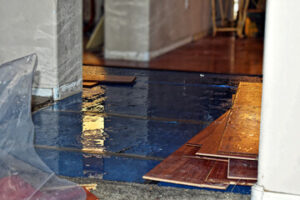When water damage strikes your home or business, professional water removal experts have the tools and training to restore your property to its original condition. They use professional drying systems to remove water from walls, ceilings, and other building cavities. These sanitizers and foggers can kill harmful bacteria, and they use dehumidifiers to remove excess moisture from the air.

Submersible pumps are used to remove water from a number of locations, including construction sites, manholes, and basements. They are also useful in cleaning up water in fountains and excavations. There are several different kinds of submersible pumps, and they can be designed to handle various types of liquid.
Utility pumps are designed for everyday and occasional uses. Some common uses of utility pumps include the removal of standing water, draining water beds, and aquariums. They can move water as much as 25 feet. To choose the right pump for your needs, refer to the horizontal axis of the performance chart to ensure that the pump you buy has sufficient horsepower to complete your job.
Small submersible pumps offer portability and compact design. They can be easily stored and are ideal for home use. These pumps come with advanced features that will maximize their durability and longevity. Plus, they are easy to use and don’t require any installation. They can be used to pump water from pools and hot tubs as well as from flat surfaces.
Submersible pumps are ideal for applications where removing water is necessary. They function by removing solid particles from the water and using water pressure to push water to the surface. They are quiet and can run for extended periods. However, a disadvantage of submersible pumps is that they are not easily accessible, which makes them unsuitable for good deep applications and routine maintenance. Unless you have the knowledge and equipment to service these pumps, you may end up with a pump that breaks down prematurely.
Submersible pumps are made of polymers or metals, and the casing is hermetically sealed. This prevents liquid from entering the pump and damaging its internal components. A submersible pump can also be fitted with a float switch, which allows it to work in situations where liquid leaks into the casing and damages the motor.
A combination of techniques can be used to accelerate the drying time of a building. This will minimize long-term damage and speed up the recovery process. While there may not be visible signs of water, the presence of wetness in walls can lead to swelling, cracking, and mold growth. In some cases, it can even affect the building’s foundation.
The amount of water that has to be removed from the home will determine how long the drying process will take. A few inches of water can be extracted quickly, while 4 feet of water will take many hours or days to dry. However, this timeframe may vary depending on the severity of the water damage.
Drying time is a function of three factors: temperature, humidity, and airflow. All three work together to facilitate evaporation and influence the movement of vapor into equilibrium. During the drying process, high-temperature air movers are used to removing any remaining moisture. This helps the remaining water molecules escape into the air, allowing the object to dry faster.
The amount of moisture a solid can hold depends on its density (kg/m3). Porous materials are especially vulnerable to water retention, and this can lead to wall swelling and mold damage. Fragile materials, such as studs, insulation, and subfloor, can be damaged as well. Additionally, dripping storage units and wet boxes can damage floors. To completely restore a property, it’s important to thoroughly clean the area in question.
In the most severe cases, water damage can cause severe property damage and ruin many of your possessions. For this reason, it is essential to act immediately. As water is time-sensitive, the longer it remains in the property, the more damage it can cause.
Water removal costs vary depending on the size of the area affected. The faster the water is removed, the less damage is done to your home. Water leaks can occur in places that are difficult to notice or find. This can cause a much higher cost to repair. In addition, the damage can occur in several parts of your home.
